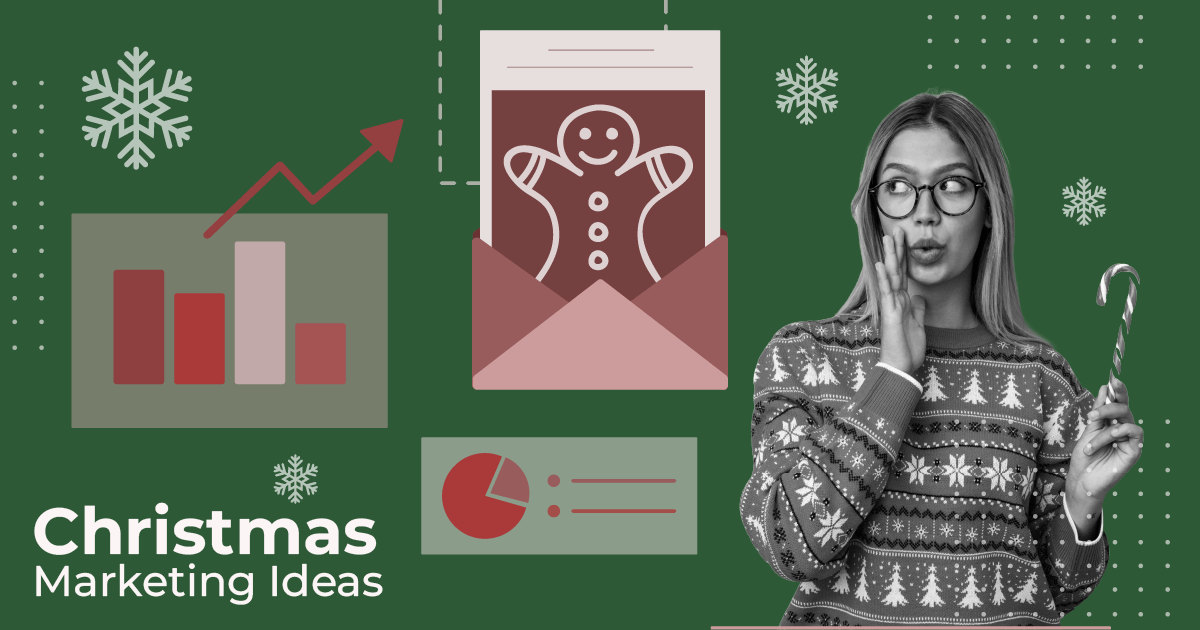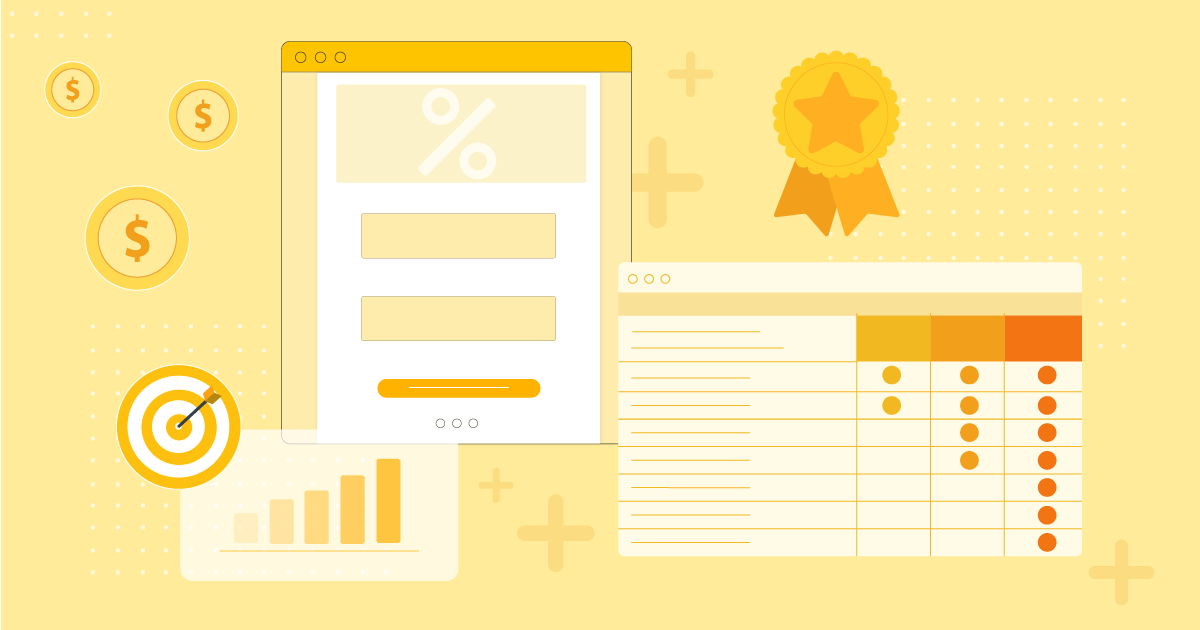
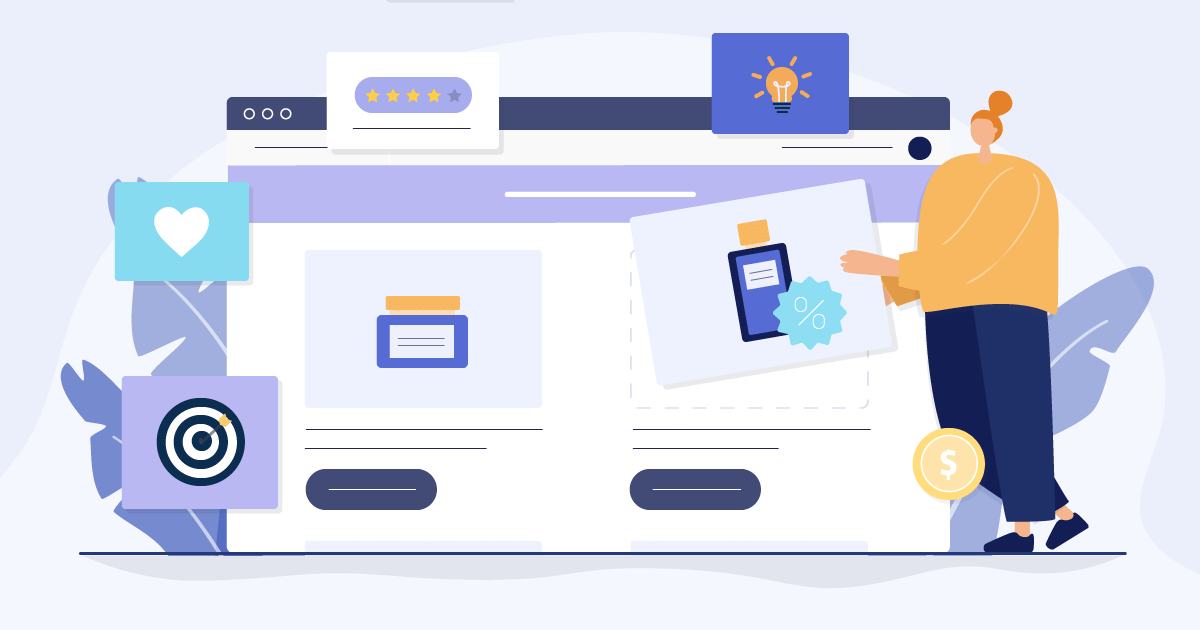
Consumer Behavior In Marketing: Definition, Types And Data Collection Methods [2024]
It is not a secret that businesses have invested millions of dollars trying to understand consumer behavior and use it to increase sales.
But wait! Is it possible to use behavioral data to convert more customers? Let’s find out!
Making decisions is part of our everyday life. Marketers have long tried to discover what influences this decision-making process to improve their marketing strategies and customer experience (CX). The biggest questions for them are whether analyzing behavioral data can actually help them achieve their goals and increase their sales.
Today, we’re going to answer these questions by taking a look at the definition of customer behavior, the factors affecting it, the best data collection methods, and more.
Need a trustworthy tool to help you gather behavioral data and use them to create and deliver more effective marketing messages?
What Is Consumer Behavior?
In short, consumer behavior entails the study of how people reach a decision before they purchase a product or a service. Studying it is important as it sheds light on the complex emotional and mental processes that affect it.
Understanding buyer behavior can also help marketers discover what drives people to buy specific products over others and identify the goods that are important to them.
Key Consumer Insights From Customer Behaviour Studies
Before we get to the types and factors affecting customer behavior, let’s take a look at some essential statistics:
- 96% of US customers make online purchases (BigCommerce)
- 87% of buyers search for items online (The KeenFolks)
- 18% of people buy an item they didn’t plan to when they visit a store (Lumina Intelligence)
- 88% of US shoppers use coupons when purchasing (Statista)
Apart from these buyer behavior insights, here are some more recent data influenced by Covid-19:
- 31% of US customers started buying less expensive items to save money (McKinsey)
- 60% of consumers were expected to make their holiday shopping online (McKinsey)
- 88% of global buyers will remain loyal to the brands they bought from during the pandemic (Bazaarvoice)
Types Of Buyer Behavior
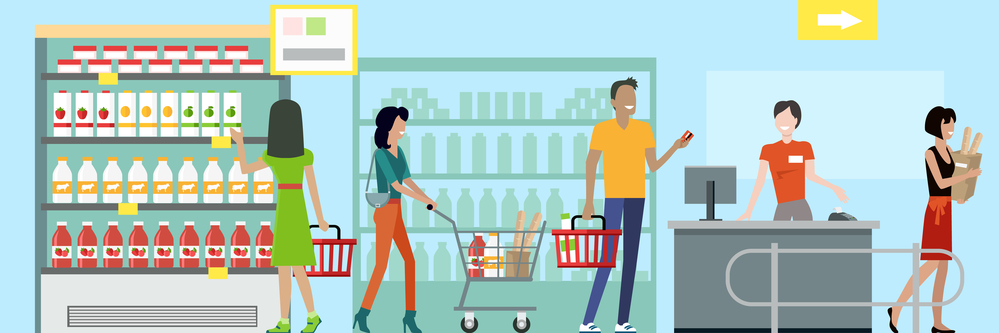
Customer behavior is a complex matter. To understand it better, we also need to take a look at the different types of behaviors that buyers adopt throughout their customer journeys. Let’s see:
Habitual Buying Behavior
First of all, habitual purchasing is more about fulfilling a need rather than spending too much time selecting a brand. As a result, customers will grab an item on the spot without any prior research. That’s because their purchasing decision is based on their experience with the item not with the company.
For instance, if they are used to buying a specific bottle of ketchup, they’ll stick to it because they are familiar with the taste.
Variety-Seeking Consumer Behavior
Variety-seeking customers don’t have a specific brand in mind when they visit a store. This means that they end up trying different products to discover something new. Their opinions about these items are usually formed after purchasing them. Also, these shoppers can’t be considered loyal customers because they will not stick to only one product.
For example, variety-seeking consumers might purchase different shampoo or detergent brands to find the most suitable one. According to social psychology, this behavior is mainly affected by other people (family, peers, Instagram influencers, etc.) and the existence of internalized norms.
Complex Purchasing Behavior
This consumer buying behavior involves expensive products, items that shoppers have no adequate knowledge about, or high-risk investments. In this case, consumers need to conduct their own research, taking into account information from various sources like the company’s marketing pages or customer reviews.
Potential buyers are likely to form an opinion about the product before purchasing it. For example, complex purchases include cars, houses, or appliances.
Dissonance Reducing Buying Behavior
The last purchasing behavior is applied to situations where a customer will experience a feeling of dissatisfaction after getting an item. This dissonance occurs due to the high pricing of the product and the existence of better alternatives.
Similar to the complex purchasing behavior, buyers are highly involved in the process, but they can’t identify the actual difference between these products. As a result, they have to do more extensive research, comparing and contrasting them to reach a final buying decision.
Factors Affecting Customer Behavior
The above buyer behaviors are influenced by a variety of factors. For instance, the recent pandemic is a prime example of how our purchase decisions can be affected by external forces.
In this section, though, we’ll keep Covid-19 at the back of our mind and focus more on the common factors that shape consumer behavior:
- Personal influences: Age, personality, education level, lifestyle.
- Psychological factors: Attitude, motivation, and individual beliefs.
- Cultural influences: Culture, social class, etc.
- Social factors: Family, peers, and social status.
So now that you’re familiar with the types and factors influencing consumer behaviour, it’s time to examine the different customer types occurring from these decision-making processes.
The Main Buyer Categories
Based on their individual needs, advertising, and the level of engagement with a brand, we can identify seven types of customers:
Need-Based Consumers
These buyers make purchases to cover a specific need. This means that they usually find it more difficult to buy additional items on a whim. If you want to motivate them to buy more, you need to have a specific marketing strategy in place.
Furthermore, need-based buyers can be easily converted by other businesses offering greater customer experiences. Nevertheless, they can turn into loyal advocates if you approach them with friendly marketing messages and great promises.
Potential Shoppers
As the name suggests, this type has a specific need that your product has the potential to cover. However, to convert them, you need to target them with personalized messages that will truly speak to them.
Focusing on the characteristics of these shoppers like their demographics and psychographics will help you approach them more efficiently and turn them into the next consumer type.
New Customers
First-time buyers fall under the new customer segment of a B2C or B2B business. These consumers need a lot of attention as they can turn either into repeat customers or abandoners. With the right marketing campaigns, you can nurture these new shoppers, offer irresistible incentives, and show them why your brand is better than your competitors.
Also, since the buying decisions of this segment are made based on experiences, you need to make a great first impression (usually with a beautiful welcome email) to minimize the risk of losing them.
Loyal Buyers
Loyal shoppers are the most important type you need to engage. Nurturing them into advocates of your brand will not only promote your customer retention but give you the chance to increase brand visibility through word-of-mouth marketing.
To keep a loyal customer base, provide them with satisfactory products, address their concerns, and keep them engaged every step of the way. If you keep your promises, you can influence consumer decisions effortlessly and build a brand that will have loyal supporters instead of casual shoppers.
Discount Hunters
A great percentage of your customer base comprises of people who make a purchase only during sales periods. These “deal hunters” will always conduct thorough consumer research to find the best deals.
To win them over, address their love for coupons and target them with the right offers. While this segment can be easily converted by other brands, you can encourage them to buy more from you by promoting special discounts on social media or through your email newsletter campaigns.
Impulsive Customers
Impulsive shopping is heavily influenced by personal factors like the emotional and mental state of the buyer. While these consumers have fewer chances of becoming loyal advocates, they will gladly follow marketing campaigns with relevant recommendations.
For instance, targeting this group with weather-based campaigns on a winter day will motivate them to make an impulse purchase to cover a seasonal need.
Wandering Consumers
Wandering buyers look like impulsive shoppers; however, this type will enter a retail store without a specific goal in mind. Special offers and unique campaigns might attract their attention. The key to turning them into potential buyers and then loyal customers, though, is the information they will receive from shop assistants.
Similarly, wandering online shoppers might look at different product pages. The best thing you can do to convert them is to use your email marketing automation software to deliver personalized campaigns that will encourage them to act.
If you want to convert these customers, sign up for a Moosend account to create beautiful email marketing campaigns with personalized recommendations and offers!
Why Is Consumer Behavior Important In Marketing?
So now that you know about the different buyer behaviors and types, it’s time to see how you can use your knowledge of customer behavior for your business.
First of all, in a study of consumer expectations by Salesforce, 66% of consumers highlighted that they expect businesses to understand what they need. This means that you have to identify their unique customer needs, invest in new product lines and use the right people to sell them.

However, what’s interesting here is that 66% of the participants also feel that eCommerce businesses and retailers treat them as numbers. Thinking of your customers as variants of a profitable equation is logical. Nevertheless, it isn’t the right way to increase brand loyalty and have buyers who will support you throughout their customer journey.
If you want to create an efficient marketing plan for your business, study the key buyer behavior insights, draw your own conclusions, and deliver messages that will make your target audience feel special.
Thus, you will manage to train your marketing and sales team more effectively, create a content marketing strategy with messages that will speak to your audience, and improve your conversion rates.
Now that we saw the importance of understanding consumer behavior, it’s time to see how marketers can get their own consumer insights.
How To Collect Customer Data For Your Business
The best way to understand your target audience is to ask them directly or track their online behaviour.
Of course, when the words “data” and “collection” come together, don’t forget to comply with GDPR regulations. Remember that consumers now have more control over the information they give to companies, so if you want to collect the necessary data, make sure to:
- Be transparent about their use.
- Ask for permission through your online forms.
- Keep the information secure to avoid any kind of data leaking.
- Respect customers who don’t want to give their personal info.
With these in mind, let’s see the best data collection methods your business needs:
1. Newsletter Signup Forms
When visitors sign up for your email newsletter, you can collect valuable information through custom fields. For instance, you can capture their name/surname and birthday or more complex info like their preferences, educational background, and professional experience.
Let’s check out Bulgari’s form below:
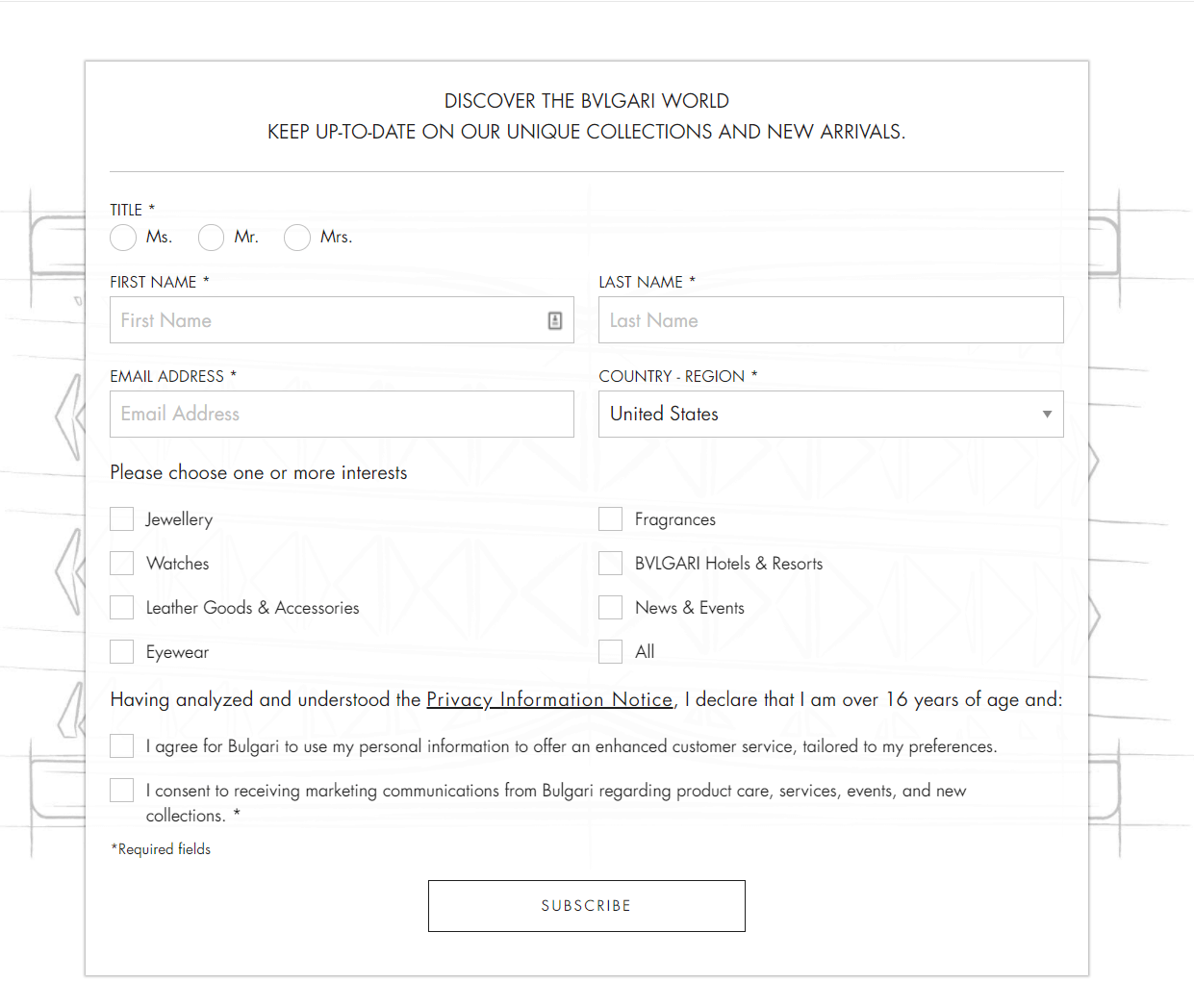
Of course, making your pop-ups extra lengthy might discourage visitors from registering. So, when you create your online form, make sure to add only the necessary number of fields. After all, you can collect more consumer behavior data through your email campaigns later on!
Also, if you want to create amazing forms, get an online builder tool like Moosend’s to simplify form creation, increase your newsletter signup rate and empower your business!
2. Customer Surveys
Surveys are the easiest way to find out more about your audience. For instance, you can ask your shoppers to provide you with feedback when they visit your retail store. However, if you want to minimize frustration, create a survey email and let them answer from the comfort of their home.
Here’s a simple example by The New York Times:
Subject line: A short survey for readers
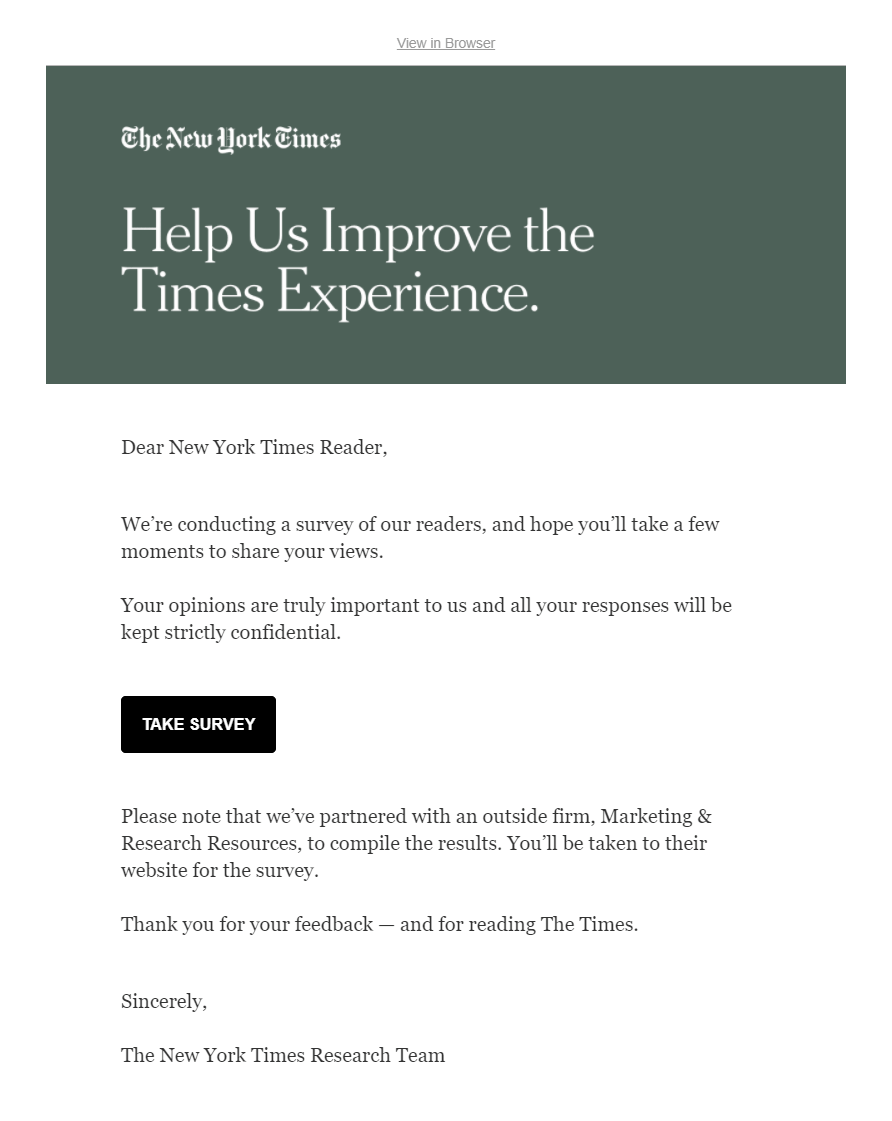
With this simple email marketing example, the famous publisher motivates subscribers to take part in its survey.
Here’s what makes it work:
- Straightforward email subject line
- Clear and actionable email copy
- CTA button that stands out
- Information about the data processing method
- Commitment to keep customer data confidential
A beautiful campaign will allow you to collect consumer behavior data effortlessly. Furthermore, to make sure that your subscribers open your email, don’t forget to add urgency to your subject lines! Offering them a reward in exchange for their opinion is a great way to get them to act!
Are subject lines the bane of your existence? Make sure to check how they’ll perform through a subject line tester! Refine is the perfect tool for the job!
3. Interviews and Focus Groups
If you feel that you need more data, then interviews and focus groups are another great data collection method you can use.
When it comes to interviews, you can organize one-on-one conversations with consumers to gather in-depth information. While this method works, you should always take into account the fact that customers might not be honest with you and give more general answers.
Focus groups, on the other hand, are similar to interviews but with more than three people. A moderator usually guides the conversation and asks relevant questions. This method is great to give you a multitude of data from different individuals and target groups.
4. Online Tracking and Marketing Analysis
Of course, your best data collection card is your website! Using online tracking will show you how your visitors behave and what leads them to checkout. Moreover, you can keep track of your potential shoppers’ behavior through real-time heatmaps, recordings, and targeted on-page surveys.
Here’s a real heatmap example:
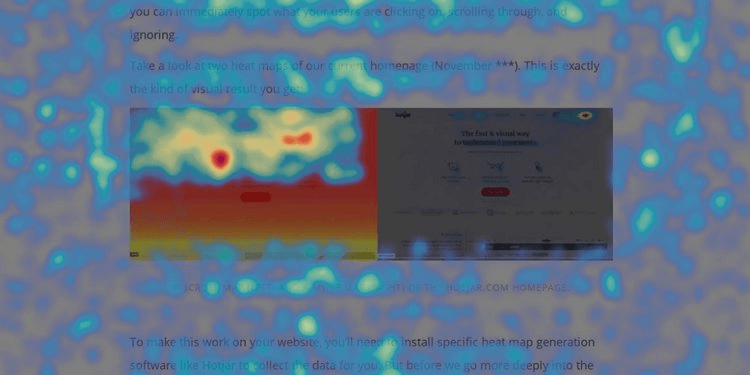
Apart from tracking online behavior you can also run a marketing campaign analysis to find out how your audience interacts with your email content.
For example, you can use the reporting and analytics tools of your email marketing service to detect patterns based on your opens, click-throughs, and overall engagement of your campaigns.
This way, you can collect valuable data and use them to optimize your email strategy!
5. Social Media
Social media is everywhere! And let’s not forget that consumers love using them to search for information, connect with friends, and engage with their favorite brands. This channel can be a powerful ally to collect data as people will post more about their hobbies and interests without much thought.
Thus, brands can get useful information by monitoring consumer behavior and using it to optimize their social media marketing strategy. Of course, don’t forget to keep track of mentions and comments on your social posts to see what your audience thinks about you. This practice is widely known as social media monitoring and it will give you valuable insights into the relationship between your customers and your brand!
6. Customer Reviews
When people have great customer experiences they tend to share them with their peers through consumer reviews. Brands like Amazon have recognized the potential of testimonials and star ratings as powerful tools to convert prospective shoppers.
And to get those reviews, the company will ask for feedback through a dedicated email:
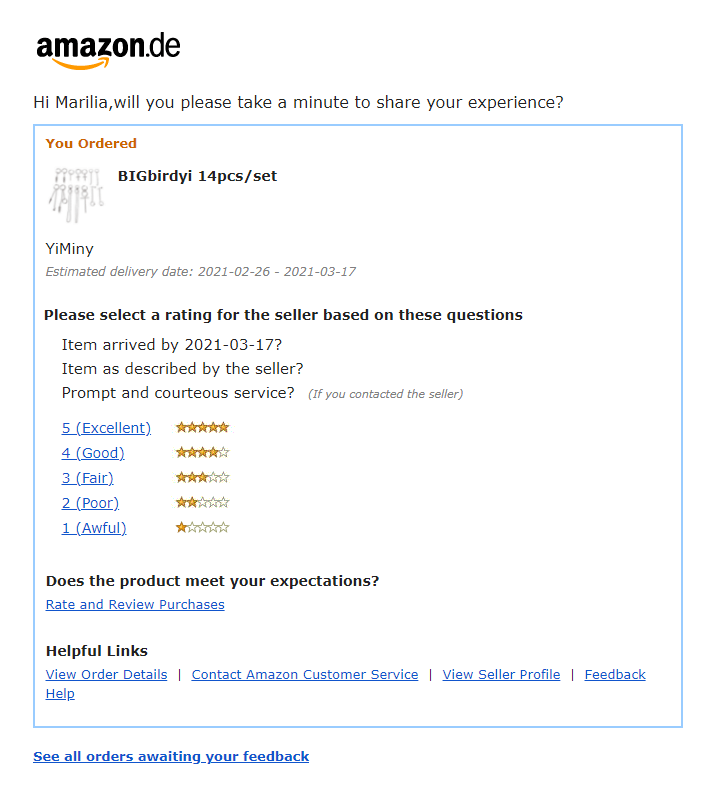
With this campaign, Amazon can collect feedback about items and sellers and use it as social proof on its product pages and future promotions.
Whether good or bad, customer reviews are a simple and efficient way to gather information. So if you want authentic opinions, make sure to collect them through a simple email!
Start creating your customer review emails today with an easy-to-use drag-and-drop builder and responsive email templates!
7. Keyword Research
Apart from social media, shoppers will also use Google to find out more about certain products and services. Each person’s queries can reveal valuable information about the individual and their needs. So what can you do to find out what they need? Well, the easiest way is to use a keyword research tool like Ahrefs to discover the search volume for specific keywords and phrases.
Of course, don’t forget to narrow down your search by finding keywords related to your niche. When you do, create relevant content like LinkedIn ads or blog posts to target them the right way. This way, you can rank your resources on search engine result pages (SERPs) more effectively and increase your marketing efforts!
8. In-Store Traffic and Feedback
To collect data, you can also use “offline” means. For example, retailers can monitor foot traffic on a daily basis or use a customer feedback system to collect information about their buyers’ experience.
Here’s a simple example from Dufry:

All of the above data collection methods will provide you with valuable consumer insights that you can use to improve your marketing and sales endeavors. On top of that, it’ll allow you to understand their needs and identify potential issues.
Knowing what consumers want will let you nail customer segmentation and help you personalize the customer journey for better engagement and loyalty.
Identifying Buyer Behaviour Patterns
So how can you segment your audience? Well, to do it the right way, you have to examine the common consumer behavior patterns. When we talk about these patterns, we refer to the intentional collective behaviors that buyers show over the course of time.
Spotting buyer behavior patterns is essential to visualize the different customer categories and group your customers into segments. Here are some of the most important patterns you need to consider:
- Purchase Location: The store(s) that shoppers prefer to visit to get your products.
- Online vs. Offline Purchases: The number of customers buying from e-shops versus physical stores.
- Products Purchased: The types of products they get, separately or in combos.
- Time of Buying: The timing of each purchase and the needs driving it.
- Checkout Method: The ways they use to pay for an item (cash, credit card, etc.).
Monitoring these patterns will allow you to identify customer trends and help you group your audience based on similar criteria.
Speaking of which…
How To Segment Customer Behaviour
Up to now, you might have heard of behavioral segmentation, a method that focuses on understanding buyers based on how they respond to certain products, their opinions, level of engagement, and so on.
Below, you’ll find some of the most important segmentation methods you can apply to your brand:
- Purchasing Behavior: Segment shoppers based on their decision-making process.
- Customer Journey Stage: Find the stage your audience is at to target it more efficiently.
- Benefit Seekers: Group buyers according to what they want to gain from the product.
- Product Usage: Divide them based on how and how often they use it.
- Customer Satisfaction: Discover which customers are happy/dissatisfied with your brand.
- Engagement: Segment engaged and disengaged customers to improve your marketing funnel.
- Customer Loyalty: Group your loyal customers to deliver targeted messages and reward their dedication.
Segmenting your audience will make your marketing approach more effective as you’ll deliver the right message to the right person! So don’t forget to divide them into similar groups when you build your email lists.
Customer Behavior Matters!
I know that this must have felt like a long and difficult read. Nevertheless, understanding consumer behavior and identifying the important patterns, types, and factors affecting it will give you a competitive advantage.
In the era of data, knowing more about your target audience is key to converting them into loyal advocates of your brand. Nevertheless, the majority of consumers still think that companies see them as numbers. To change that, you have to collect as much information about them as possible. Then, use it to improve CX and tailor your messages to their needs.
And don’t forget, with the right tools you can make this tedious process easier! So make sure to create a free Moosend account to simplify the way you collect data through emails and landing pages.
The age of personalization is upon us! It’s time to embrace it!



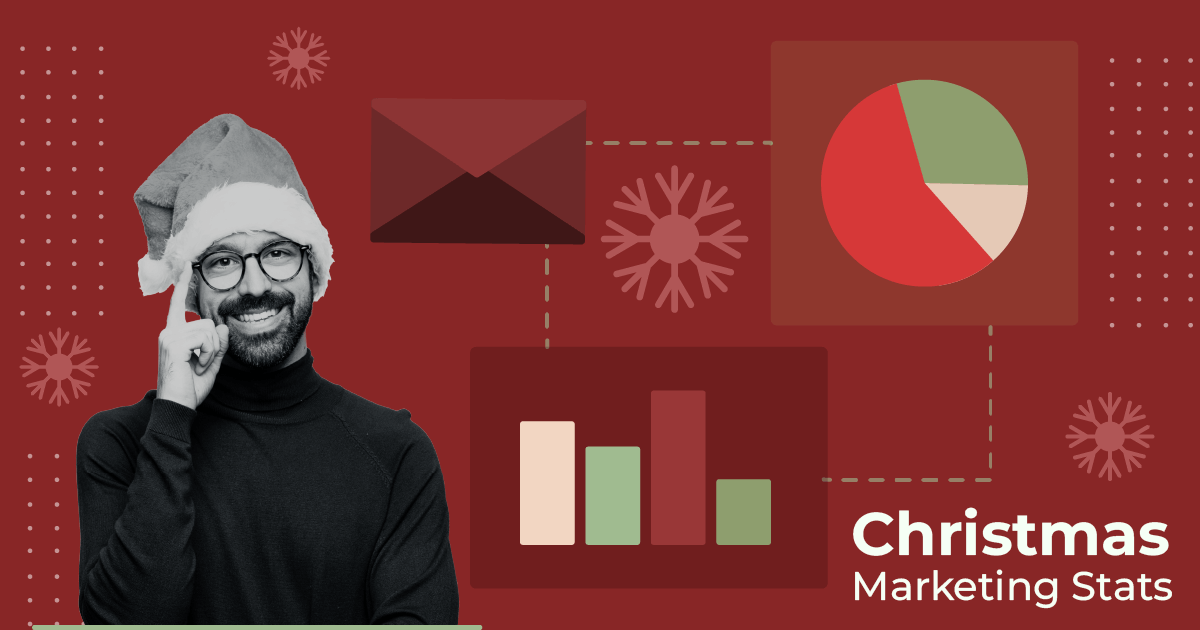
 Published by
Published by
